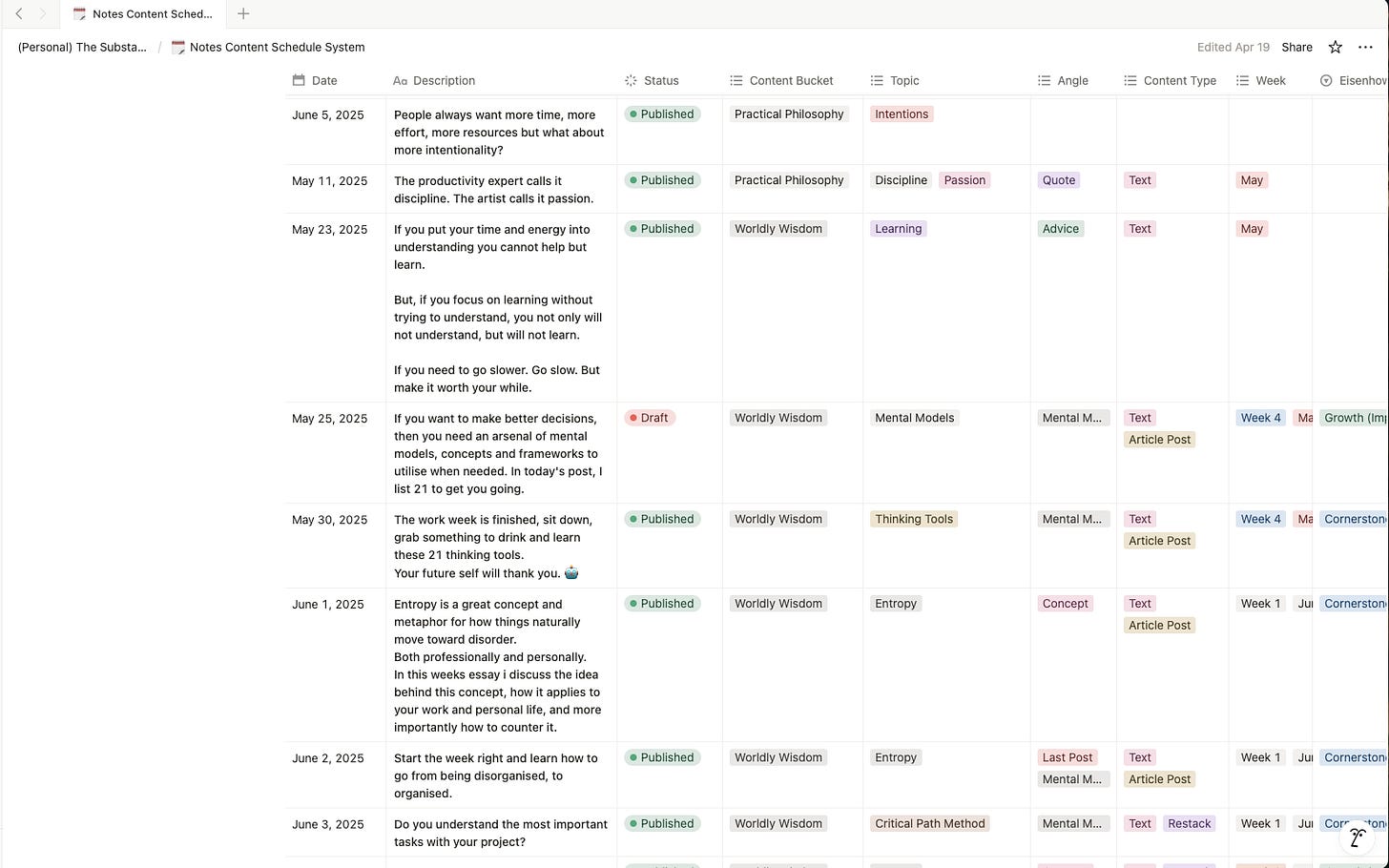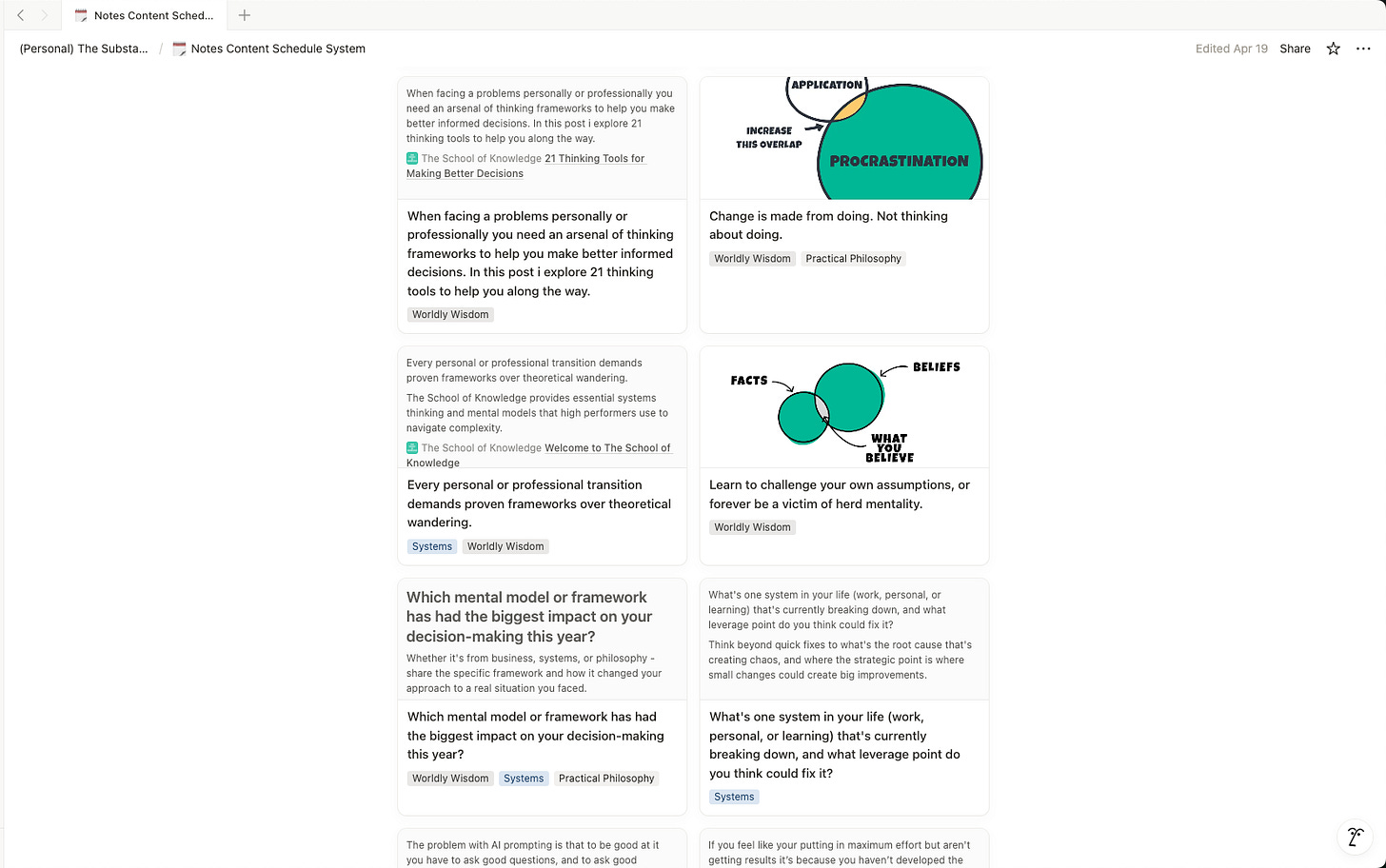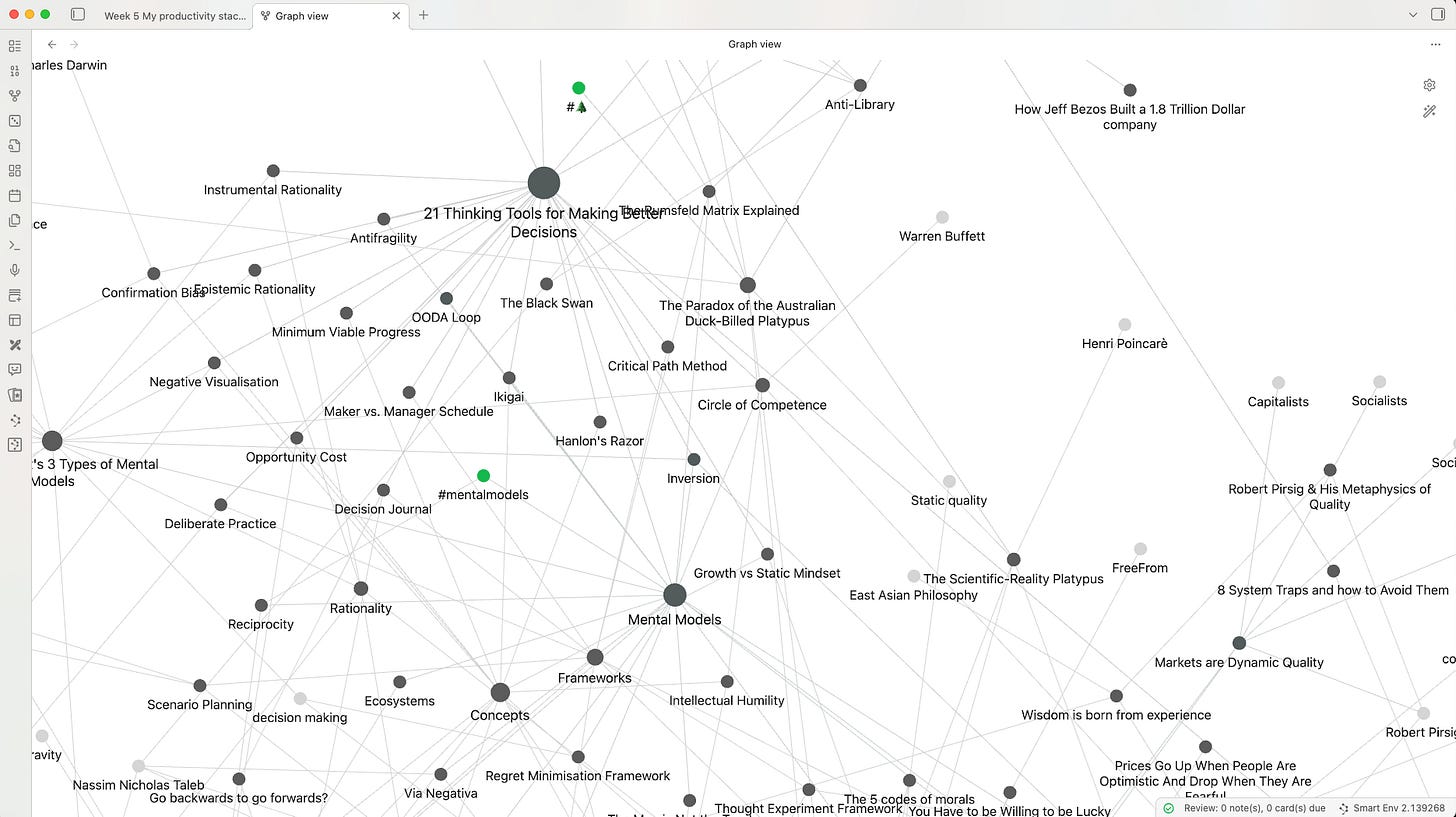My Secret Productivity System That Helped Build 8,000 Subscribers
A guide on what has worked for me
Welcome to The School of Knowledge and this week’s fourth edition of my “How to Integrate AI” series. If you wish to start from the beginning please visit my homepage here: The School of Knowledge
Here's what nobody tells you about productivity tools: most people use them wrong. They collect apps like trading cards—Notion for this, Obsidian for that, seventeen different AI assistants for everything else. Then they wonder why they feel more scattered than before.
The last 4 weeks, I've been exploring how to integrate AI more productively, but the lightning pace at which things can change has left me numb in the brain and feeling, well, unproductive.
I have had a lot of fun exploring the basic functionalities of Claude, ChatGPT and Gemini. I understand them better as tools now, but that's what they'll remain—tools. Not total solutions.
Through learning about AI, I've come to see the value in the tools I was using before. Slower, yes, but steady!
I can't deny AI has opened up ways of working that wouldn't have been possible just a few years ago. The key I've come to learn, though, is in understanding when to use the right tool for the right job—and that includes AI.
My system, if that's what you can call it, isn't perfect, but when I deter from using it, I can feel the ship taking on water. The tools I use can help bale water out, or drag the ship down further.
I've been writing The School of Knowledge part-time for a little over two years now. That's as well as co-running a construction business, which I greatly enjoy. The pair have formed this symbiotic relationship where I can use writing to help me at work, and work to help me write. If I'm calling a spade a spade, I'm not an expert in writing, content creation or pretty much anything, but I have built this Substack to nearly 8,000 people, and I want to share with anyone willing to listen my favourite tips, tricks and tools that got me there.
Readwise
I've been using Readwise for a few years as a way of capturing highlights from my physical books. It does this by opening up my camera within the app and taking a picture of my highlight. Readwise then converts that passage into text where I can edit, tag and add notes. All of my highlights are in one place, so I can quickly read the highlights of one book or digital file if I wanted to. On top of this, I also have a "Highlights Feed" which can be thought of as a better social media, where instead of reading politically charged rhetoric all day, I can instead read Munger, Pirsig and Seneca—or whoever your favourite writers are.
The app is clean, easy to use, and even has some features that aid actual learning, such as spaced repetition. Readwise has also introduced an AI agent that can scan through myhighlights and pull conceptually similar highlights for us to chat about. Great for resource gathering.
Reader
Reader is Readwise's sibling. What makes Reader brilliant is its unified reading experience. Instead of jumping between browser tabs, newsletters in Gmail, and PDFs scattered across my desktop, everything lives in one clean interface. I've set it up to automatically import my Substack subscriptions, so when I sit down for my reading session, I'm not hunting through emails or bookmarks. I just open Reader, and there's my curated queue of quality content. The highlighting syncs instantly to Readwise, meaning I never lose a good quote or insight again.
Kindle
Readwise's ability to capture highlights from a physical book is a game changer, but it's laborious. I had 199 highlights from Poor Charlie's Almanack and it took me hours to upload them all from that book alone. I've tried to upload them immediately after highlighting, but that ruins the flow of reading, and I've tried uploading the previous day's highlights before beginning to read, but whichever way I did it, it was a chore.
So, I decided to buy a book from the Kindle store and give it a go. It worked so much better than my old way. I highlight a passage, take notes and within a few minutes it's uploaded to Readwise and synced to my Obsidian vault upon opening. I still prefer reading a physical book, but having the ability to sync my Kindle, Readwise and Reader highlights directly to my note-taking app Obsidian saves me hours a week, days a month and weeks a year.
For those who are familiar with the book "How to Take Smart Notes," I take notes underneath my highlights, which are called literature notes. These are rough, and most of the time won't make sense to other people; however, these are important as they form the basis of my permanent notes.
Google Keep
The newest addition to my system, I've been using Google Keep to record on-the-move notes. Something Obsidian isn't great at. I can create lists, upload images, audio, set reminders and scribble over anything. Visually appealing and with easy exporting and integration capabilities, it's a great little note-taking app for when i’m on the move.
Capturing information is only half the battle. The other half is organising it before it buries you.
Eisenhower Matrix
I've tried many task management systems, including Thiago Forte's "Second Brain," but I've found most to be too complex—and when things are too complex—they rely a lot on motivation to keep going. I've found that the Eisenhower Matrix is simple, but works for me. Remember what Charlie Munger said:
"Take a simple idea and take it seriously."
Every week, I write out what needs doing and then organise it according to its importance and urgency, and just like dark clouds pass after a thunderstorm, so does my brain fog after completing this simple but effective exercise.
Notes Scheduler
Short-form content is hard to keep up with, even if you want to post just once a day. Substack Notes is great for discoverability, but it doesn't let you schedule posting which sucks. It sucks because you can sense when people haven't thought things through and gained the clarity that only writing, editing and time can provide.
How often do the words that come out of your mouth make sense? How often do you wish you would have said things differently?
To combat this, I created a "Substack Notes Scheduler" in Notion. Because Substack has limited API capabilities, I still have to copy and paste the text into Substack when I want to publish. Slightly annoying but it works great. No more opening Substack, clicking the + button and staring at a blank page.
Something I haven't been doing much of recently but need to get back into is sitting down every Sunday and making 7 days' worth of short-form content. Again, this simple system that takes an hour each week helps keep my Substack consistent and is often used as a guide to what long-form content I should write.
Here's where the real magic happens though: turning all that captured information into actual knowledge.
Obsidian
Obsidian is my note-taking app where all of my captured highlights live. From there, I elaborate on them and turn them into short notes. This forms the basis of my permanent collection and from which I write most of my long-form content. One of the key features of Obsidian is the graph view. Because Obsidian uses back links, the graph view represents a brain-like image showing the connections between all of my notes. It's like having somebody else's eyes to see a different world.
Obsidian offers community plug-ins, and this is where it goes from a really good note-taking app to a great one. Even the best knowledge system needs enhancement, and in the next section I show you how AI transforms my workflow from a 7/10 into a 9.5.




